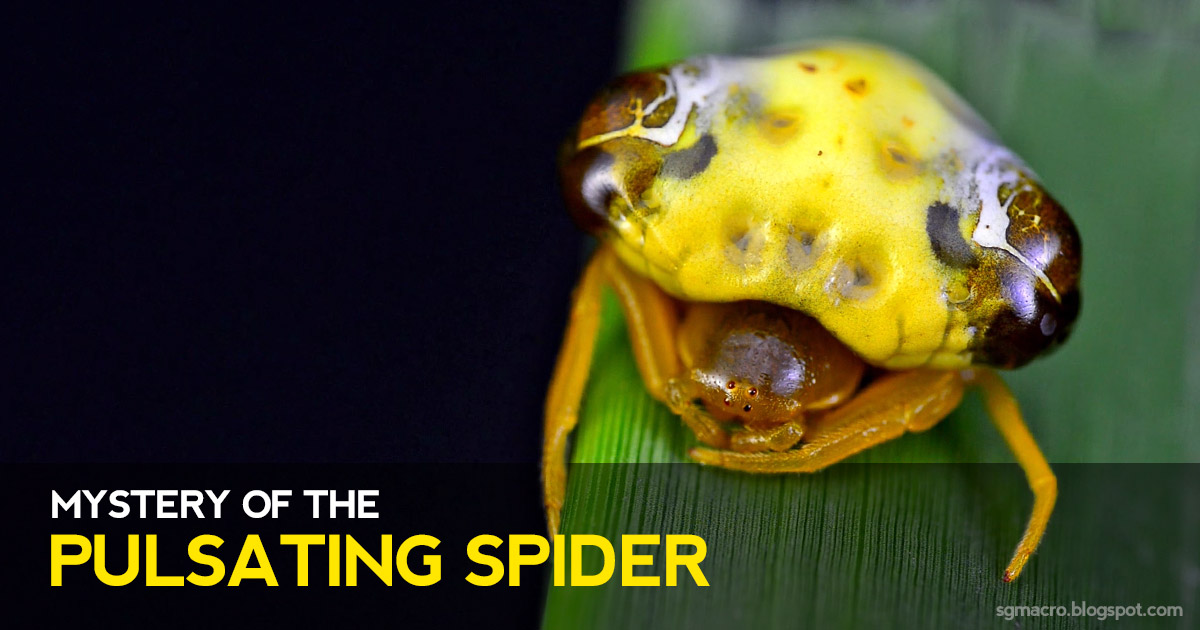by Greg Mayer
Matthew shared with me an interesting video of a spider from Singapore that looks like the head of a snake.

The videographer, Nicky Bay, is most interested in the pulsation of a dark region below the ‘eyes’, but to me it’s the resemblance to a snake that is most striking– the ‘nostrils/loreal pits’ (note the number/arrangement is not perfect), and the ‘preocular and supralabial scales’. There are at least two species of pit vipers on Singapore. The mangrove pit viper is dark, and not at first glance an appealing candidate for a a model. Wagler’s pit viper, though, has potential.
Mimicry of snakes by arthropods is not common, but not unknown. Jerry posted here at WEIT earlier about a lepidopteran pupa mimicking a snake, and Matthew posted on a caterpillar mimicking a snake, as well as a frog said to mimic a bird dropping. I mention the latter because Bay considers that the spider may be a bird dropping mimic, which doesn’t seem to be the case to me. He gives it a vernacular name of “bird dropping spider”, but says, “Gave me the impression of a snake’s head though!” The taxonomic identity of the spider is not clear; there are additional photos on his website.

Personally, I agree with JAC that it looks more like a snake than a bird dropping. But in terms of adaptation, it doesn’t have to be ‘going for’ one or the other; ambiguity might be more beneficial than a more accurate mimicry of either, because it sweeps in different types of observers.
Note, this post was written by Greg Mayer, not by me. Guest posts always have the author’s name at the top.
It does remind me of a snake, too, but as for thinking of the spider mimicking a snake, could that be due to human bias? Vide: “Humans recognize partially obscured snakes more easily than other animals,” https://www.sciencedaily.com/releases/2016/11/161108073126.htm.
There are even terrestrial flatworms that closely resemble in color patterns venomous coralsnakes and pitvipers, but turns out they are noxious, so not entirely clearly who’s model, who’s mimic…
The spider seems too small to be reasonable for a predator to mistake it as a snake. We may be dealing with aggressive mimicry, where the model is not a venomous or dangerous prey, but rather a predator of the selective agent. For example, the selective agents could be small wasps or other insects that parasitize or prey on spiders (like mud daubbers) and the model an insectivorous lizard. Lizards, unlike snakes, have eyelids and can sometimes move their eyes. The pulsation of the spider’s “eye modules” might emphasize this feature. I don’t think anyone has shown that wasps recognize and avoid possible predators, but there are many things going on that no one has reported on. Any child who has disturbed a wasp nest knows that wasps are sophisticated enough to recognize and respond appropriately to enemies.
A possible model is the common Asian grass lizard, Takydromus sexlineatus.
https://bangkokherps.wordpress.com/2011/09/20/long-tailed-grass-lizard/
Oh, I could easily see that in this spider! (Not that it’s trying to fool me, of course.)
Also–it looks more gecko-ish to me.
Simply an amazing puzzle.
My suggestion on the moving dots is that it would attract the attention of small prey bringing them within range.
“Bird dropping spider” sounds so mundane.
Since it is ambiguous re snake mimic as suggested in the thread, I propose … wait for it [/Barney Stinson] … “Singapore Sling”.
Very cool, thanks for the post, Dr. Mayer.
Another potential snake mimic within the insects are the Atlas moths (the largest moths by wingspan in the world), where the patterns of scales on the upper margins of the forewings closely resemble that of a snake head. This is particularly striking in the case of Archaeoattacus staudingeri, which is distributed in Sumatra, Peninsular Malaysia, Borneo and Java. Presumably the mimicry is designed to scare of potential predators?
I photographed an example of this species in Sarawak on Borneo earlier this year. This individual had only just emerged (it was in mint condition) pre-dusk that day and had perched itself on the side of a house.
Jerry I’ll send you a photo of this spectacular beast in case you want to share it.
Somehow that photo of the spider reminds me of the Necker cube, the duckrabbit and similar “unstable” images.
Very cool critter–thanks, Greg!
Ha! I am a Singaporean living in Singapore and I learnt something from you! Thanks! Glad you enjoyed Singapore….my lil red dot 😊